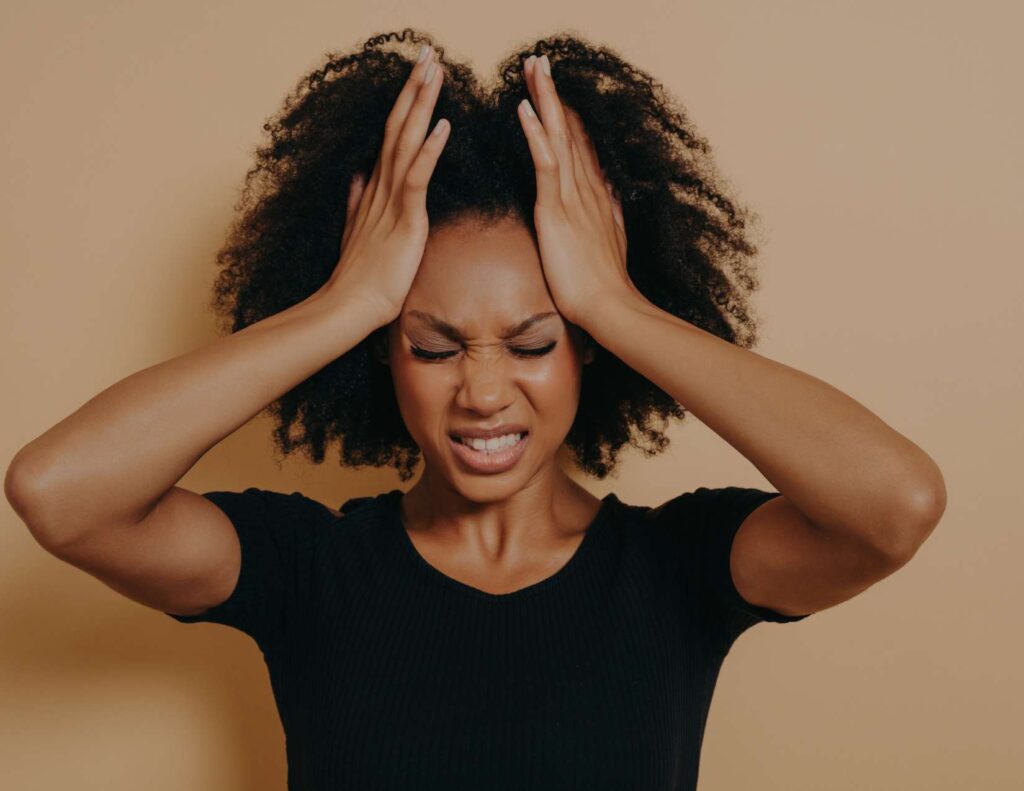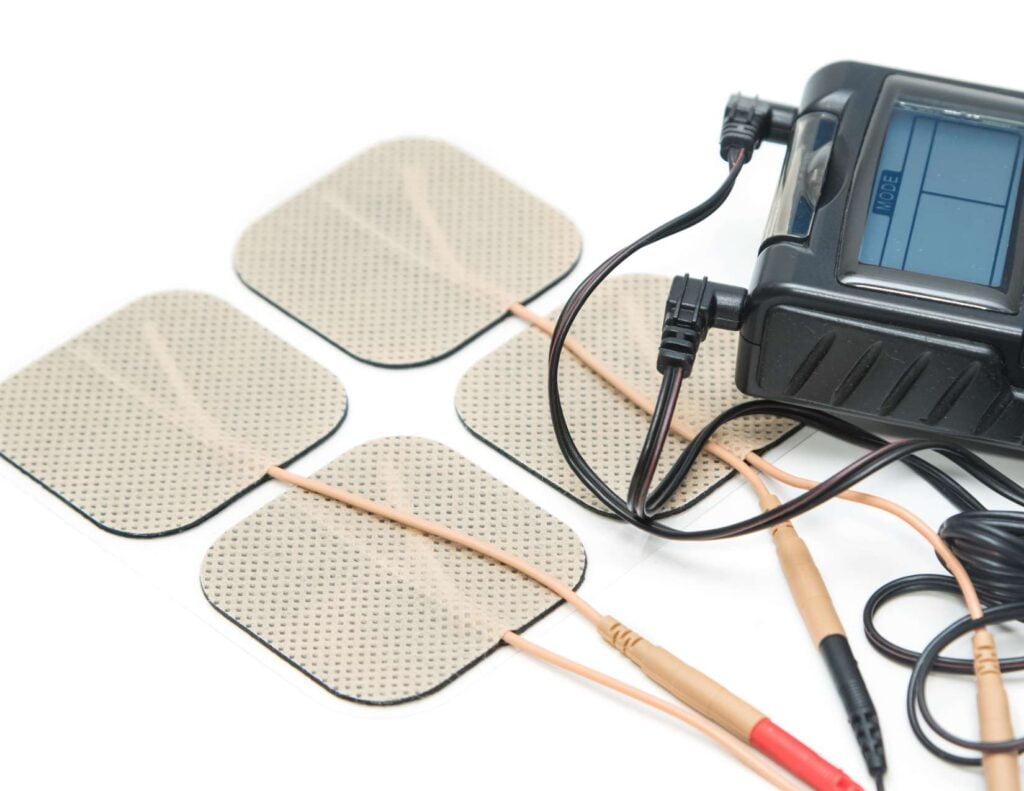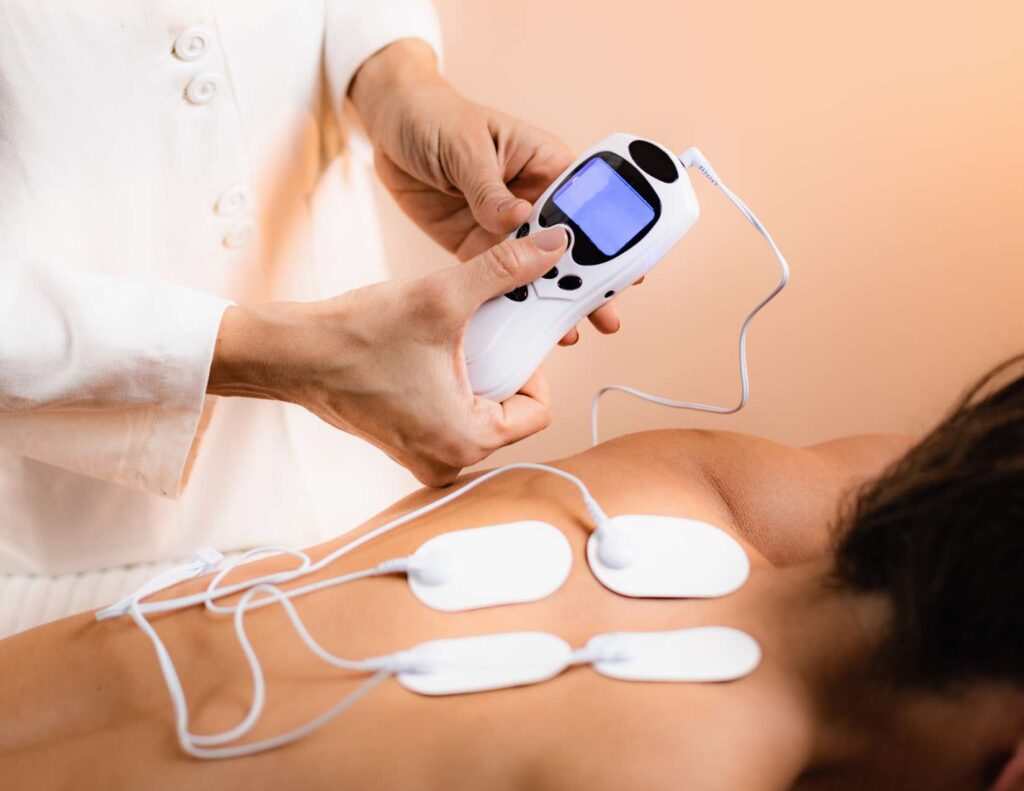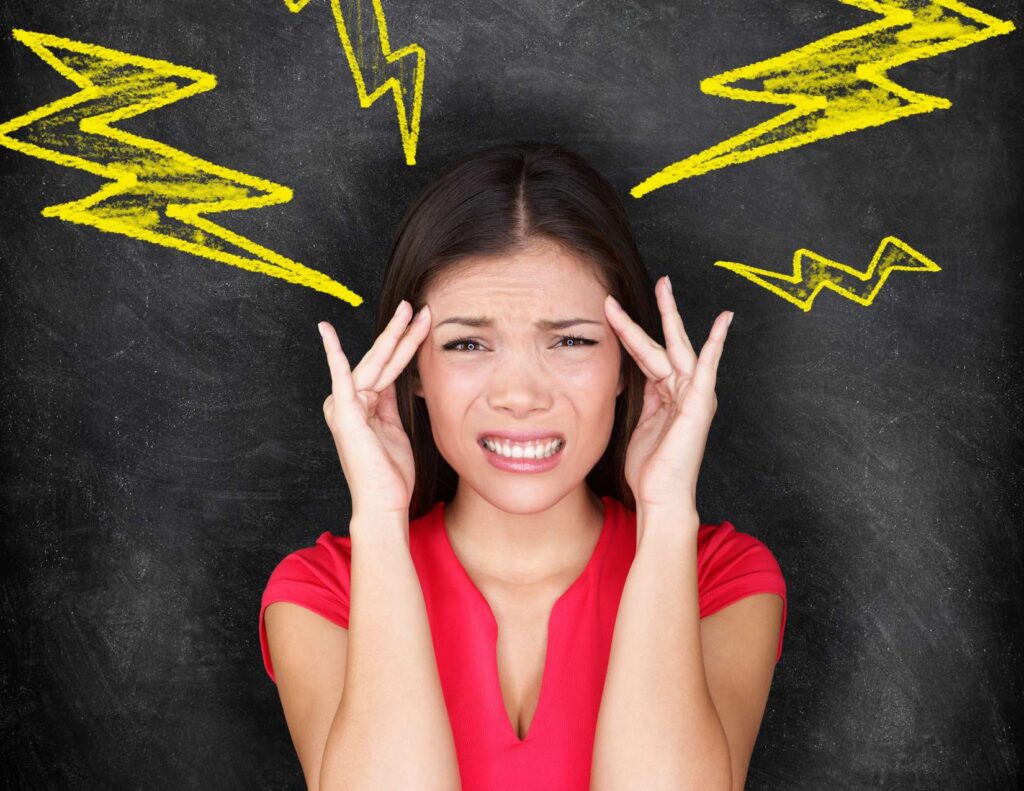The Best TENS Placement for Migraine Headache Sufferers
Last Updated on September 25, 2023 by Dr. Tiffany Egan
Migraines can be a debilitating experience, especially for pregnant women. Traditional methods of pain relief may seem to fall short, or come with unwanted side effects. Not to fear, though—there’s an alternative.
Transcutaneous Electrical Nerve Stimulation (TENS) can provide a drug-free, effective means to alleviate your discomfort. This guide will walk you through the process of the best TENS placement for migraine headache sufferers.
Table of Contents
Understanding Migraines
Migraines are more than just headaches—they are neurological episodes that can cause intense pain, nausea, and heightened sensitivity to noise and light. The pain is typically throbbing and concentrated on one side of the head.
A migraine can last anywhere from a few hours to several days, which can significantly impact your day-to-day activities.
There are several different types of migraines.
The most common are:
• Migraine with aura: involve visual disturbances, such as seeing spots or zigzag lines.
• Migraines without aura: the episode begins more suddenly and without any warning signs.
Tension headaches differ from migraines in that they are less severe and affect both sides of the head. Symptoms of a tension headache include dull, constant pain or pressure around the forehead or sides of the head.
Chronic migraine sufferers may experience headaches on 15 or more days per month. Other symptoms may accompany the headache, such as changes in mood, fatigue, sensitivity to light and sound, dizziness, and nausea.

Phases of Migraines
Migraines typically progress through four stages:
- Prodrome: Preceding the headache, you might observe subtle changes that signal an upcoming migraine. These can include mood swings, food cravings, stiffness in the neck, and increased yawning.
- Aura: Some people may experience visual disturbances, such as seeing flashes of light or blind spots, or other disruptions, like tingling in the face or hands.
- Attack: The actual migraine occurs, which can last from a few hours to several days. The frequency of migraines differs from person to person.
- Post-drome: After the headache has subsided, you may feel washed out and tired.
Not everyone who suffers from migraines will go through all of these stages.
Introducing TENS Therapy for Migraine Relief
Transcutaneous Electrical Nerve Stimulation (TENS) is a non-invasive, drug-free treatment option that uses a mild electrical currents to alleviate pain.
It works by blocking the pain signals of the peripheral nerves that are directed towards your spinal cord and brain. While also increasing the production of endorphins, your body’s natural painkillers.
The nervous system then sends out positive signals instead of pain signals, which can help reduce the severity and duration of migraine headaches.

The Science behind TENS Therapy
The effectiveness of TENS therapy is explained by the Gate Control Theory of Pain.
This theory suggests that non-painful input, such as the mild electrical current from the TENS unit, closes the “gates” to painful input, preventing pain signals from reaching the brain.
As a result, TENS can offer significant relief from chronic pain, including a migraine attack.
Clinical trials supporting TENS therapy for migraines have documented a reduction in pain intensity and frequency. The resulting relief can last between a few hours to several days, depending on the individual’s symptoms.
Some studies have found that TENS Therapy is more effective when combined with other treatments such as relaxation or cognitive-behavioral therapy.
Overall, TENS therapy has been shown to be an effective and safe method for reducing the frequency and intensity of migraine pain episodes.
It can provide long-term relief for those suffering from chronic migraines, as well as short-term acute pain relief during a migraine attack. Its non-invasive and drug-free nature make it an ideal treatment option for many people.
To ensure the best results, individuals should consult with their healthcare provider before using TENS Therapy or any other type of migraine treatment.
They should also consider using other treatments in conjunction with TENS Therapy to maximize their migraine relief. With the right combination of approaches, many can enjoy a life free from migraine pain and discomfort.

Why TENS Placement for Migraine Headaches Matter
The TENS placement for migraine headaches is crucial to its effectiveness. A general rule, the pads should be placed where the nerves associated with migraine pain can be stimulated.
Key areas for TENS placement for migraine headaches include the back of the neck, across the forehead, over the temples, on either side of the lower nose, over the jaw, and just behind the ears.
TENS Placement for Migraine Headache Relief
Here is a detailed guide to placing TENS electrode pads for mitigating migraine pain:
- Back of the Neck: This targets the neck muscle and sub-occipital nerve (the nerves under the base of the skull). If your headache tends to alleviate with neck treatments, this could be an effective TENS placement for you.
- Across the Forehead: The forehead placement targets the trigeminal nerve, which is significantly associated with migraines. This placement stimulates the supraorbital nerve branches of the trigeminal nerve.
- Over the Temples: This targets the temporalis muscle and the trigeminal nerve branches that travel to the dura mater.
- On Either Side of the Lower Nose: This placement stimulates some lower branches of the trigeminal nerve in your face.
- Over the Jaw (TMJ): This placement targets the jaw joint (TMJ) that often has strong input and is frequently accompanied by headaches and migraines.
- On Either Side of the Head, Just behind the Ears: This placement stimulates the mastoid bone (the bone behind your ear).
There are many types of different treatments depending on the type of headache, parts of the body involved and migraine symptoms.
Remember, everyone is different and you may need to experiment to find the best TENS placement for migraine headaches for YOU!
Using a TENS Machine for Migraines
Here are some general steps to use a TENS machine for migraine relief:
- Clean the area: Before applying the TENS pads, make sure to clean the skin in the area where you will be placing them. This ensures a good connection between the skin and the electrodes.
- Place the pads: TENS placement for migraine headaches should be on the specific area where you would get the most benefit.
- Turn on the TENS machine: Start with a low setting and gradually increase it until you feel a comfortable yet strong tingling sensation.
- Adjust the settings: TENS machines have different settings for frequency, intensity, and pulse duration. You can adjust these according to your comfort level and needs.
- Duration of treatment: A typical TENS session lasts for about 20-30 minutes and can be repeated multiple times a day if needed.

Precautions and Potential Side Effects of TENS
While a TENS device is generally safe, it is important to be aware of possible side effects and precautions:
- Skin Irritation: Prolonged use of TENS may cause skin irritation or redness at the site of electrode placement.
- Allergic Reactions: Some individuals may have an allergic reaction to the conductive gel used with TENS.
- Muscle Twitching: If the electrical stimulation intensity is set too high, TENS can cause involuntary muscle contractions or twitching.
- Numbness or Tingling: TENS can cause numbness or tingling sensations in the area being treated. If this becomes uncomfortable or painful, adjust the intensity or electrode placement.
- Use with Medical Devices: People with pacemakers or other implanted electrical devices should avoid using TENS as it may interfere with the functioning of these devices.
Alternative treatment for Migraines
TENS has been used to reduce the pain associated with migraines.
However, other alternative treatments may help reduce the frequency and intensity of migraines, such as relaxation techniques, chiropractic, acupuncture, massage therapy, yoga, and biofeedback.

Lifestyle Modifications for Migraine Sufferers
If you suffer from migraines, neck pain or tension headaches, it is important to take steps to reduce your pain and improve your overall quality of life.
This can include lifestyle changes such as eating a healthy diet, exercising regularly, avoiding triggers such as certain foods or drinks, and managing stress.
Medications may also be prescribed to help reduce the intensity and frequency of headaches. It is important to talk to your doctor about any treatments you are considering.
With the right combination of lifestyle changes and medications, you can find relief from migraines.
Conclusion
TENS therapy could be the ray of hope for those suffering from debilitating migraines. With proper TENS placement for migraine headaches, this non-invasive, drug-free treatment could provide significant relief.
Remember, it’s always best to consult with a healthcare provider before starting any new treatment regimen. Migraines shouldn’t dictate your life.
Take control with TENS therapy and embark on a journey towards a pain-free existence!






